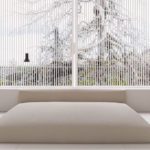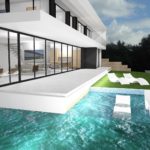We all know that architecture influences life and lifestyle is a reflection of the social, economical and political index of a society. It changes over a period of time as these factors do, and so design solutions that were ideal for our forefathers won’t necessarily be viable today. Because of this very important quality, our lifestyle is intricately connected to our practice of architecture and vice-versa.
Architects are trained in different ways to find design solutions systematically. If we have to design a house, we constantly shift our focus to make sure that while the house functions well, on the whole, a problem with any of its rooms must be solved without disturbing the overall usability of the house. This approach can be used to tackle any real-life problems.
Architecture also teaches us empathy, as we are responsible for creating spaces that will govern the users’ daily lives. It requires us to forget ourselves and really see from the perspective of the users, so that we can create a space that feels like a part of them, instead of just a containing chamber made of brick and mortar. It is this empathy that enables us to be more sensitive to not only other people but also the effective arrangement of spaces and elements that tend to have on us. And it is this very thought process that slowly becomes second nature to us- an unconscious, involuntary reaction to minute changes around us, and the awareness that the skills we have are not just important for our profession, but also our relationships and our lives.
Awareness of the various problems and difficulties that go into building and construction also give us a renewed respect for land and material resources and everything we can do to minimize damage. It sensitizes our thoughts and actions toward the well-being of the environment.
Efficient architectural solutions are a by-product of environmental awareness. The knowledge of the natural phenomena makes ground for understanding fundamental lifestyle structure provided to us by nature. A simple example of a tree providing shade on a sunny day with fresh air explains one of the most basic reasons for having a shelter over our heads.
Simply having to mimic this whole idea will give us a successful built environment with an accurate amount of ventilation, natural light, and shade. A number of such examples are present across time. If the built spaces are considered an extension of our own skin, we’ll have to assume that it breathes like we do and is entitled to climatic adaptation like us. Such spaces are built from in-situ materials and their construction techniques are always in harmony with the environment, respect it and are successful in having a minimal impact on the environment. Also, such buildings have a character of the place giving the whole system an identity according to it.
But “if” is a factor here, and this “if” denotes our lifestyle. Our architectural education has given us a free choice- “If” we want to build to reach the tallest heights, or “if” we want to build a modest single-storied dream home for a family who has put their lifetime worth of savings in your hands. We can decide “if” we want to achieve the highest standards in green building with the latest technology and materials or “if” we want to go back to our traditional indigenous practices. As mentioned in the start, architecture mirrors the lifestyle of its users.
Therefore, as users and consumers of architecture, the reader must also know that you, too, get to choose which one of these “ifs” you want to let your lifestyles be influenced by. It is your choices that determine how our future cities will be shaped, because if the architect is the artist, you, the consumer, are their patrons. As architects, we have been bestowed with power may be to create a better space to live in. And our lifestyles will govern what sort of “if” we follow, followed by the spaces we deliver.
Source: Re-thinkfuture.com





